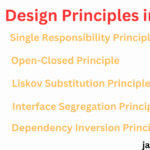
In 2023, the leaders in UI development are JavaScript frameworks such as React, Angular, and Vue.js, which are renowned for their scalability and resilience. Svelte gains ground thanks to its compiler strategy that prioritizes performance, whereas Preact’s lightweight design shines at rendering quickly. While Next.js/Nuxt.js optimize for search engines, Ember.js offers stability for intricate apps. For security and productivity, server-side JavaScript is ruled by Node.js and Deno.
1. React:
- Developed by Facebook, React is a JavaScript library for building user interfaces.
- Uses a component-based approach, where UI is broken down into reusable components.
- Declarative programming style, making code more predictable and easier to maintain.
- Virtual DOM for efficient rendering, minimizing updates to the real DOM.
- Excellent community support, with a large ecosystem of libraries and tools.
2. Angular:
- Developed by Google, Angular is a JavaScript framework for building single-page applications.
- Uses a component-based architecture, with components handling specific parts of the UI.
- TypeScript is the primary language used, providing strong typing and code organization.
- Two-way data binding, allowing for seamless synchronization between UI and data.
- Powerful features such as dependency injection, routing, and templating.
3. Vue.js:
- Lightweight and versatile JavaScript framework for building user interfaces.
- Adopting a component-based approach, enabling the creation of reusable and maintainable UI components.
- Reactive programming paradigm, allowing for automatic updates to the UI when data changes.
- Virtual DOM for efficient rendering, improving performance.
- Simple API and documentation, making it easy for beginners to learn and use.
4. Node.js:
- Cross-platform runtime environment for executing JavaScript code on the server side.
- Built on Chrome’s V8 JavaScript engine, enabling fast and efficient execution.
- Asynchronous and event-driven, allowing for scalable and responsive applications.
- Widely used for building various types of web applications, including server-side rendering, APIs, and command-line tools.
- Extensive ecosystem of libraries and modules, making it easy to build complex applications.
5. jQuery:
- A fast, lightweight, cross-platform JavaScript library designed to simplify HTML DOM manipulation.
- Provides an easy-to-use API for interacting with HTML elements, events, and animations.
- Supports multiple browsers and platforms, making it widely adopted for web development.
- Allows developers to easily add dynamic content, handle user interactions, and perform complex animations.
- Extensive documentation and a large community of users and contributors.
6. Ember.js:
- An open-source JavaScript framework for building ambitious web applications.
- Utilizes the Model-View-Controller (MVC) architectural pattern, providing a structured approach for organizing code.
- Encourages the use of best practices, such as convention over configuration and dependency injection.
- Strong focus on developer productivity, with features like live reloading, fast builds, and comprehensive documentation.
- Robust ecosystem of add-ons and libraries, enabling the development of complex features.
7. Backbone.js:
- A lightweight JavaScript library for building single-page applications.
- Adopts a Model-View-Presenter (MVP) architectural pattern, promoting separation of concerns.
- Utilizes RESTful APIs for data management, making it suitable for building data-driven applications.
- Supports event-driven programming, allowing developers to respond to user interactions and data changes.
- Well-documented and has a vibrant community, providing support and resources.
8. Express.js:
- A minimalist web application framework for Node.js, used for building web applications and APIs.
- Offers a simple and flexible API, making it easy to create and manage HTTP servers.
- Supports a variety of features, including routing, middleware, templating, and error handling.
- Highly extensible, with a vast ecosystem of third-party modules and plugins available.
- Popular among developers for its speed, scalability, and ease of use.
9. Meteor.js:
- A full-stack JavaScript framework for developing web and mobile applications.
- Utilizes a unique architecture that combines client and server-side programming into a single codebase.
- Features real-time data synchronization, allowing for reactive and interactive applications.
- Includes a comprehensive set of tools and packages for building and deploying applications.
- Known for its simplicity, rapid development process, and strong community support.
10. Svelte:
- A modern, compile-time JavaScript framework that focuses on performance and simplicity.
- Uses a reactive programming model, where changes to data automatically update the UI.
- Offers a declarative and component-based approach to building user interfaces.
- Known for its small bundle size, fast build times, and excellent developer experience.
- Has gained popularity for building performant and interactive applications.
